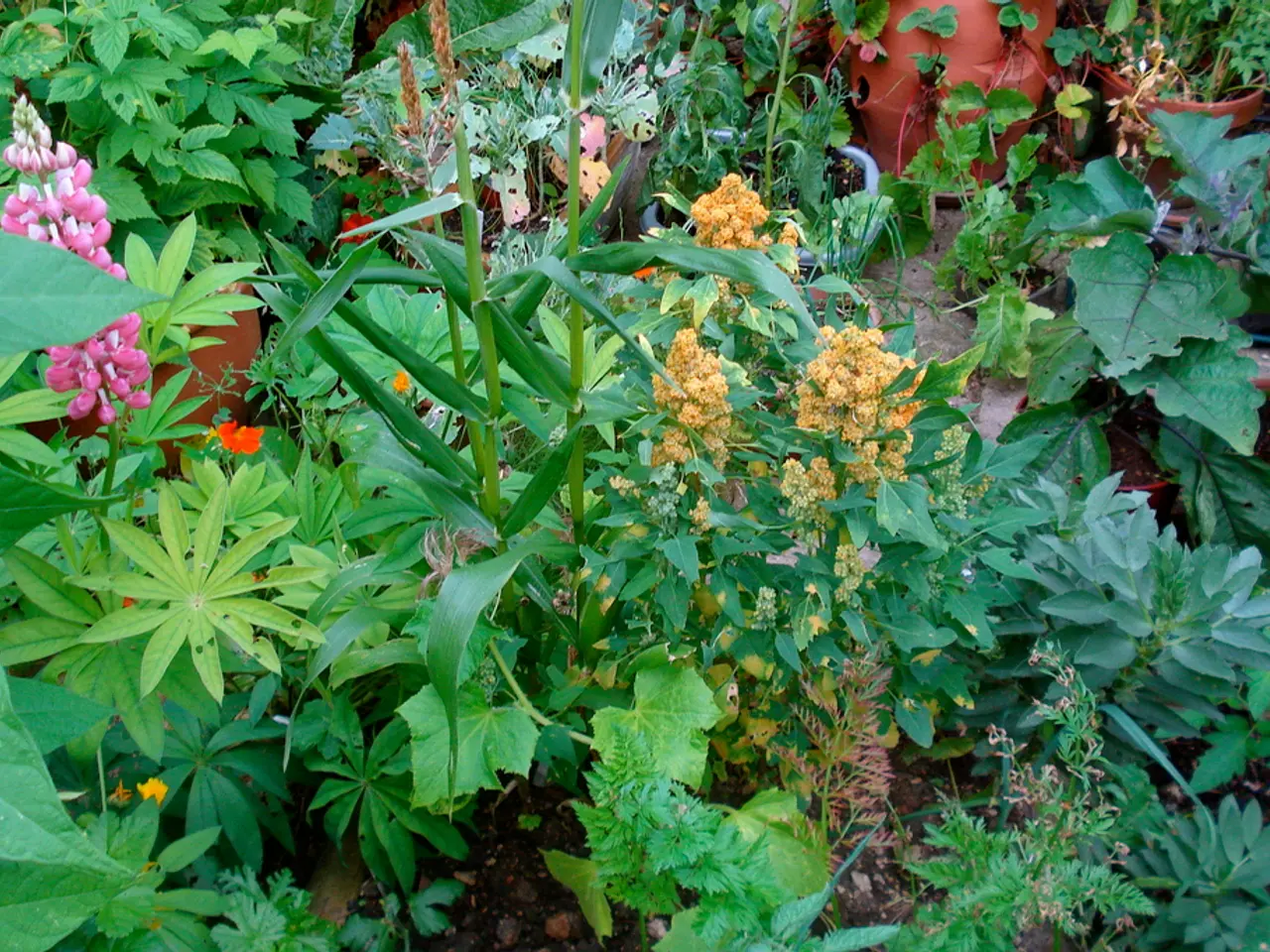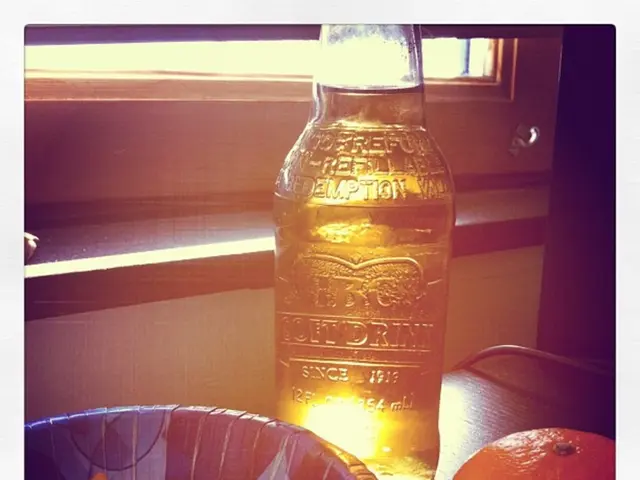Ornamental and Edible Daylilies: Blossoms for Beauty and Cuisine
In the world of gardening, daylilies (Hemerocallis) stand out as a versatile and low-maintenance choice, particularly for those seeking an edible addition to their garden. Originating from the Greek words hemera and kallos, meaning "beauty for a day," daylilies indeed offer a fleeting yet captivating bloom that can brighten up any summer day.
Daylilies are content with normal, nutrient-rich garden soil that should not be too dry. They thrive in a sunny to partially shaded location and are one of the least demanding plants, making them perfect for both novice and experienced gardeners.
Some popular varieties of edible daylilies include the 'Rainbow Rhythm® Going Bananas Daylily,' which boasts lemon yellow, sweetly fragrant flowers that bloom from early summer and often continue until early fall. This variety grows about 19-22 inches tall with a spread of 1.5-2 feet and is attractive as groundcover or for erosion control. It thrives in USDA zones 3-9 and is a favourite among pollinators like bees, butterflies, and hummingbirds.
Another popular choice is the 'Mixed and Specific Cultivars,' such as 'Shaka Zulu' and 'Mini Devils Footprint.' These named mixes and cultivars are prized for their garden aesthetics and can include varieties with varying flower colours and sizes.
Regarding edibility, daylily buds and flowers are edible and can be used as a garnish or added to salads, providing a nutritious and attractive element to dishes. The flowers are generally plentiful and tasty. However, it's essential to note that daylilies with double blooms may be less ideal for pollinator support because additional petals can block pollen and nectar access.
Half-open daylily buds have the best taste, which can range from fresh and crisp to bitter or lemony. Even without flowers, daylilies fit well into the perennial bed, as their narrow leaves resemble ornamental grasses.
Daylilies are perennials that can grow up to 80 cm tall, depending on the variety, and produce up to 500 flowers per plant. A spring application of compost and horn meal is sufficient for daylilies in a nutrient-rich soil with adequate moisture.
One notable variety is the 'Gentle Shepherd,' a white daylily with a green throat that grows up to 80 cm and blooms in July-August. Another popular choice is the 'Siloam Show Girl,' a red variety, and the 'Happy Return,' a light yellow variety that grows up to 40 cm and blooms in June with a continuous rebloom.
Lastly, Karl Foerster referred to daylilies as the "flower of the intelligent lazy," highlighting their resilience and adaptability. With a bloom period from May to late August, skillfully combining different varieties of daylilies can ensure a beautiful and bountiful garden throughout the summer months.
- The 'Rainbow Rhythm® Going Bananas Daylily,' a popular edible variety, offers lemon yellow flowers that can brighten up summer dishes, providing a nutritious and attractive element to food-and-drink presentations.
- Half-open daylily buds, such as those from the 'Gentle Shepherd' variety, can provide a fresh and crisp taste, making them suitable for addition to recipes, transforming home-and-garden-grown produce into gastronomic delights.
- Gardening enthusiasts who enjoy cooking can extend their lifestyle interests by considering the versatility of daylilies. These low-maintenance plants, thriving in sunny to partially shaded locations, offer both edible blooms for food-and-drink enhancement and attractive foliage reminiscent of ornamental grasses for the home-and-garden.




